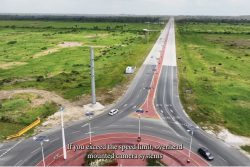In today’s column I shall continue the effort to offer readers, as careful an assessment as I can of the “reasonings” (developmental rationale), underpinning the Buxton Proposal of “oil-for-cash” transfers to Guyanese households, as the final element of the Guyana’s Petroleum Road Map, as I have been describing it. As indicated in last week’s column, while the reasonings are presented serially, no order of priority has determined the sequence of their presentations. Rather that sequence is entirely a matter of analytical convenience.
The first reasoning, which was introduced last week, had stressed the fact that cash transfers constitute a master class of poverty policy interventions, which are designed to combat income poverty. More specifically, the point was made that, this policy intervention tool is not based on abstract theoretical constructs. Instead it is essentially the product of several evaluations of poverty intervention methods, which have been conducted by leading development agencies and think tanks, over the past several decades.
As I was at pains to point out last week, it is the empirical foundation of this policy intervention tool, which in my view, gives it a clear advantage over all other poverty policy interventions, in practice. As I had indicated, the Government of Guyana’s (GoG’s) use of cash transfers as an economic instrument is not novel. All tax reliefs/refunds that are presently given to private businesses have the same effect, as if these businesses had paid their due taxes, and then the government gave them back (refunded) the cash equivalent to them!
This is not a trivial observation. Indeed, it highlights a disturbing feature of the Guyana economic environment, in which the Buxton Proposal of oil-for-cash transfers to households is being introduced. In practice, the very same businesses that benefit from such “cash transfers” (disguised as local content incentives) are among the strongest (and most hypocritical) opponents of efforts aimed at alleviating income poverty and the reduction of inequality, by this mechanism! They cynically berate cash transfers by using the derogatory term: “cash handout”. Cynically they object to the term as “cash handouts” when applied to the business sector!
Second “Reasoning”
Following on this, the second development rationale (reasoning) I offer, is similarly an empirical by-product of the studies that I have referred to above. These evaluations have clearly revealed that, traditional poverty intervention tools; such as food vouchers, subsidies, material donations (bicycles, fishing boats, school grants, medical services) all have generated a dynamic of continued dependence on these grants, which then could not be delivered or supplied to the poor in a “cost-effective” manner. Indeed, much of these donations are “re-gifted” items, both on the part of the donor institutions, as well as by the successful beneficiaries. Consequently, significant waste and mismanagement have plagued such schemes. This is simply because the demands for storage, distribution, inventory control, management, and depreciation of the donated items have risen exponentially. The evaluation studies therefore, correctly concluded that: “traditional methods for providing subsidies to the poor today, when applied have generated strong pressures to generate a dynamic for similar subsidies tomorrow” (my emphasis).
This dynamic has ensured that a lack of cost effectiveness, would become embedded in these traditional poverty policy interventions. Instead, cash transfers allow for more beneficiary control of the form of support that is needed. As a consequence, this has expanded the opportunity for more rational and cost effective use of the cash transfers. This is so, because the losses are borne by the beneficiary, and not the schemes or programs!
Despite this, the broader and perhaps more salient observation, I would venture here, is that as a rule, all poverty interventions should be tailored to work in their “local conditions”.
Third Reasoning
Having identified the centrality of “local conditions” above, I turn next to generalise on the “Guyana conditions” as the third development rationale for cash transfers. I am of the view that, in Guyana over the years, low income per head and its high variability, are the principal generators of the high levels of income poverty and their movement over time. These manifest themselves, seasonally as well. Thus, income poverty is higher, when sugar and other agricultural crops are “out-of-season”; and lower, when “in-season”. “In-season” output and its consequential demand for labour increases. From this example we can observe the relation, which best explains income poverty in Guyana. Income poverty reflects a lack of capacity to maintain living standards, to relieve destitution and other household economic distress. It also induces dependence on indebtedness, and distress sale of any assets that a person possesses. All these latter mechanisms are used to defend the status of the poor.
Fourth Reasoning
Such empirical support for cash transfers can be found in the Food and Agriculture Organization, (FAO), United Nations, evaluations of cash transfers programmes/schemes in 7 Sub-Saharan Africa countries (FAO, 2016): “Evaluation of seven cash transfers schemes in Sub-Saharan found that these generate a broad range of social, economic, and productive impacts among poor small family farmers and — contrary to common perception — do not encourage dependency”. The FAO goes on to highlight: “The cash transfers … enhanced agriculture activities … gave beneficiaries greater flexibility in labor allocation; helped them better manage risk; and cash transfers also benefitted the wider communities through local economic multiplier effects”. (ibid)
Conclusion
Next week I plan to wrap-up the discussion of the Buxton Proposal of “oil-for-cash” transfers to households. After that, I shall summarise for readers’ convenience the basic petroleum metrics that underpin the Buxton Proposal.








